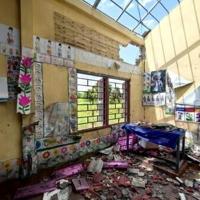Temple Tug-of-War: Disinformation Fuels Flames of Thai-Cambodian Border Conflict
The serene and historically significant Preah Vihear temple, perched atop the Dangrek Mountains, has become a focal point of a bitter territorial dispute between Thailand and Cambodia, reigniting old animosities and sparking a flurry of misinformation campaigns. This ancient Hindu temple, a testament to the Khmer empire’s architectural prowess, stands as a silent witness to a modern-day struggle for national pride and strategic advantage. The recent border clashes have not only threatened regional stability but also unleashed a digital war where truth becomes a casualty, further complicating attempts at peaceful resolution.
The conflict’s origins lie in the complex interplay of historical claims, nationalistic sentiments, and lingering resentment over past injustices. While the International Court of Justice (ICJ) awarded sovereignty of the temple to Cambodia in 1962, the surrounding territory remains a contested zone. This ambiguity fuels the ongoing dispute, with both sides claiming historical and cultural ties to the area. Nationalist narratives, promoted by political figures and amplified by media outlets, further exacerbate tensions. These narratives often portray the other nation as an aggressor, encroaching upon rightful territory and disregarding international law. Such rhetoric inflames popular opinion, making it increasingly difficult to foster dialogue and compromise.
Adding to the combustible mix is the proliferation of disinformation campaigns. As the border skirmishes escalate, partisan actors on both sides exploit social media and online platforms to spread misleading information, propaganda, and fabricated narratives. Doctored images, manipulated videos, and unsubstantiated claims become weapons in the digital battleground, aimed at swaying public opinion and discrediting the opposing nation. This disinformation blitz obscures the already intricate realities of the conflict, making it challenging for citizens on both sides to discern truth from falsehood.
The use of disinformation in the Thai-Cambodian border conflict is a worrying trend with potentially far-reaching implications. It exacerbates existing tensions, fuels mistrust between the two countries, and undermines efforts to find a diplomatic solution. When confronted with a barrage of conflicting information, citizens become more susceptible to emotional appeals and nationalistic rhetoric. This makes it harder to engage in reasoned debate and to build the necessary consensus for peaceful co-existence. Moreover, the spread of false information can be exploited by extremist elements to incite violence and further escalate the conflict.
The international community must play a more active role in addressing the disinformation crisis surrounding the Preah Vihear temple dispute. International organizations, like the United Nations, should actively monitor and debunk false narratives, promoting factual reporting and media literacy. Furthermore, social media platforms bear a responsibility to combat the spread of disinformation by implementing stricter content moderation policies and enhancing transparency in their algorithms. Facilitating cross-border dialogue between journalists, academics, and civil society organizations can also help foster a shared understanding of the conflict and counter the narratives of division.
Ultimately, a lasting resolution to the Thai-Cambodian border conflict requires a multifaceted approach that addresses both the underlying territorial dispute and the corrosive influence of disinformation. Both countries must engage in good-faith negotiations, guided by respect for international law and a genuine desire to achieve a mutually acceptable solution. Concurrently, efforts must be intensified to counter disinformation campaigns, promote media literacy, and foster a culture of critical thinking among citizens on both sides of the border. Only then can the Preah Vihear temple, a symbol of shared cultural heritage, become a beacon of peace and cooperation, rather than a flashpoint for conflict and mistrust. The path to reconciliation will undoubtedly be long and arduous, but it is essential for the future stability and prosperity of the region. The international community must lend its full support to this endeavor, recognizing that the flames of conflict, once ignited by disinformation, can spread far beyond the immediate vicinity of the temple walls.


